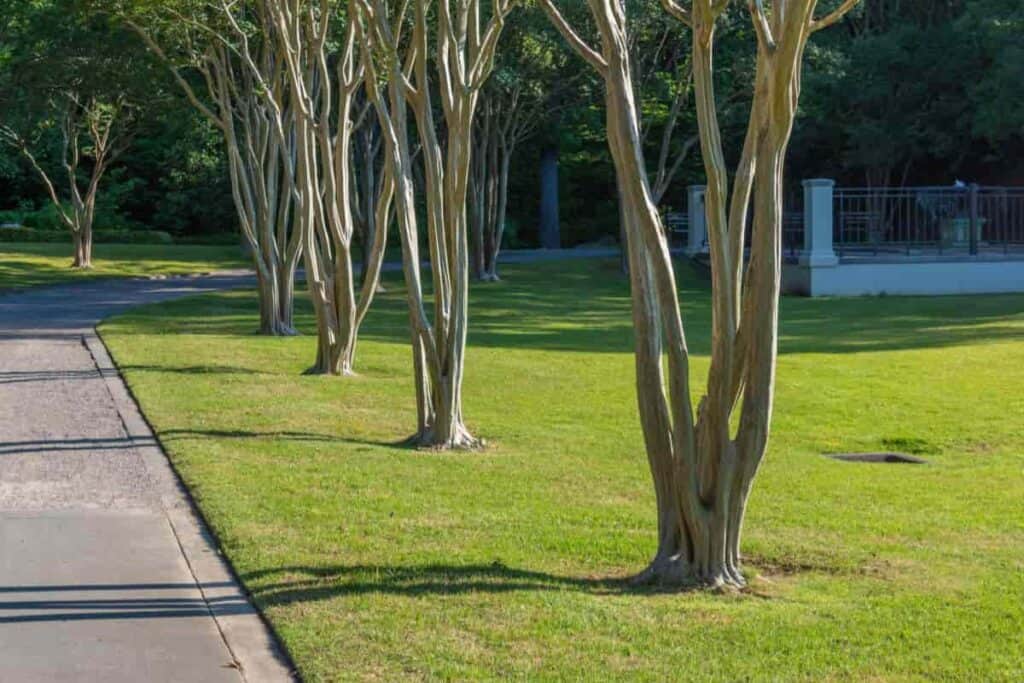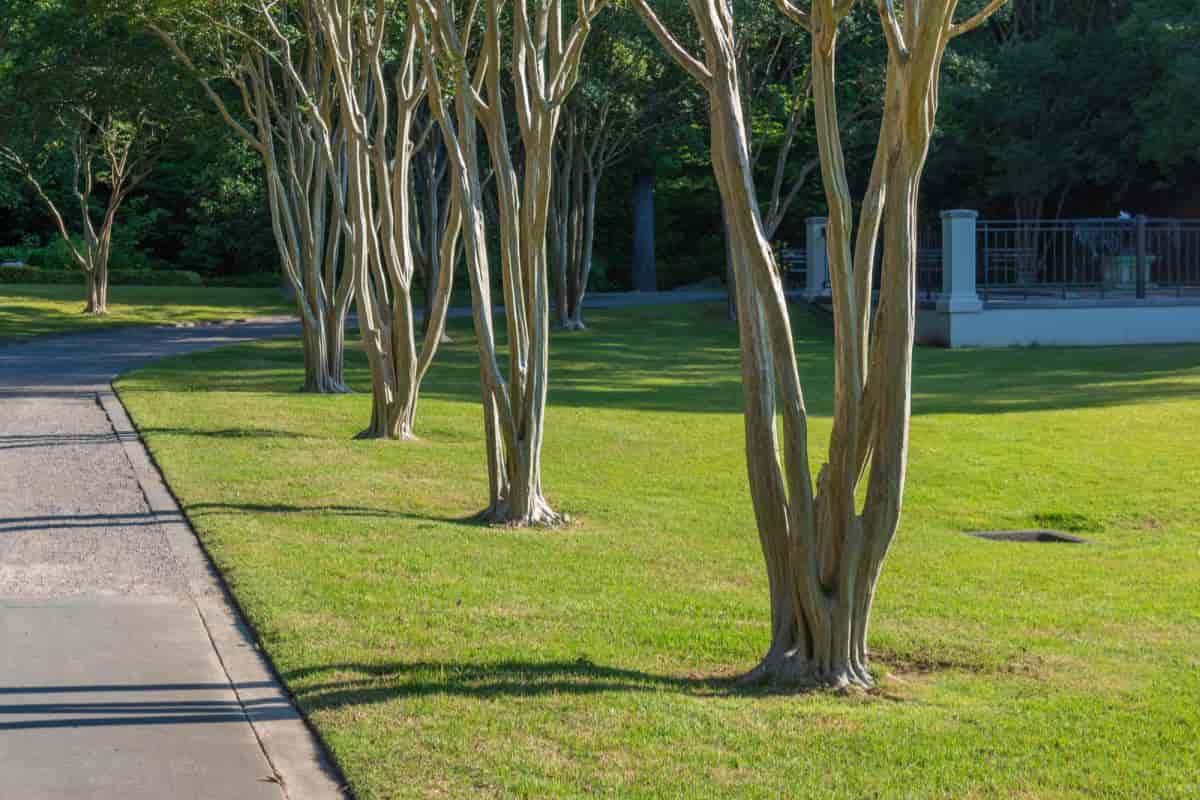Multiple-stemmed trees are gaining in popularity.
When I look out the window at the seven-stemmed catalpa breaking the view of the garden shed at the back of the yard and adding to the interest of the gate leading into the garden, I understand why.

Though I would not deliberately choose a catalpa as a lawn tree, I would be reluctant to lose this one.
Informality Is An Asset
Trees with more than one stem or trunk have an informality that can be used to advantage. They add a general note of interest and provide a more subtle accent than a tree with a single trunk because they blend more naturally with other plantings.
They are effective at the corner of a building or planted to break the monotony of modern architectural lines. Clumps are good, too, to frame a garden walk or vista.
Some trees naturally grow with more than one stem. Others may be induced to do so. More than one stem may grow from one root system, or more than one tree may be planted in the same hole.
An uneven number of stems is more appealing than only two or even four. Three stems are commonly used, although five or more may be.
The effect of a multiple-stemmed tree is heightened when it has a bark of unusual interest. That certainly is true of the birches. The American sycamore is another tree with bark that gives a dramatic effect.
There are others. The American hornbeam, yellow-wood, and persimmon are among those that have attractive bark.
Birches Have Appeal
The birches are good examples of trees that normally grow with more than one trunk. Few landscape subjects are more appealing than a clump of white birches.
The ‘reddish-tan bark of a river birch clump holds a similar interest. Another native tree that tends to grow more than one trunk is the redbud. And I have seen huge live oaks growing from multiple stems on the grounds of the Garner mansion at Uvalde, Texas.
Irregular branching of certain trees produces a pleasing pattern accented when the tree grows with several stems. The American hornbeam already mentioned is a good example.
Hawthorns also have this distinctive branch pattern. Of the larger trees, the sourgum or tupelo (Nyssa sylvatica) grows into a splendid multiple-stem tree with somewhat contorted, down-sweeping branches.
Smaller Trees
Smaller trees that lend themselves to clump growth are the Juneberries (Amelanchier), saucer and star magnolia, sassafras, flowering and pagoda dogwoods, flowering crab apple, silverbell, and golden rain tree.
The red maple, wild black cherry, and American linden are larger trees that lend themselves to multiple-stem growth.
The chart condenses some of the characteristics of 20 trees suitable for growing in clump form. Most of them generally do well in the Eastern part of the country. However, some will grow in all or parts of the West.
Yellowwood, redbud, golden-rain tree, Russian olive, sweetgum, sourgum, and Scotch pine are all adapted to the cool Northwest.
Norway maple and European hornbeam may be used along the seacoast. Redbud does well in the plains. Russian olive, very tolerant of drouth and alkaline soils, can be grown in the plains and mountain states.
The golden rain tree thrives from southern California to Canada. It is drouth resistant, endures hot winds, and grows in extremely alkaline soils.
44659 by R. R. Thomasson
